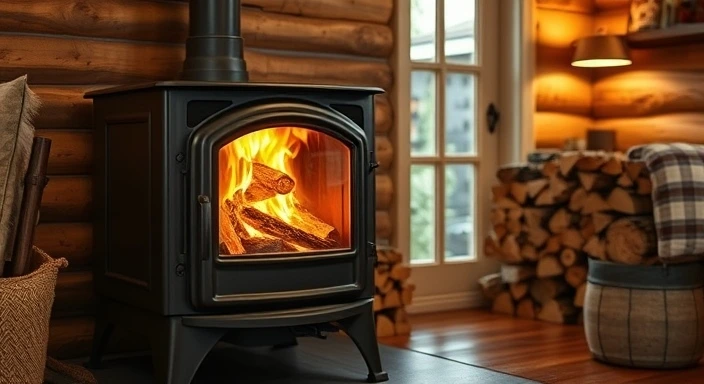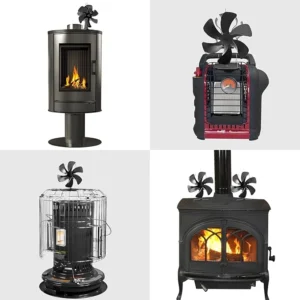Introduction
Wood stoves are a timeless and reliable way to heat homes, offering warmth, charm, and efficiency. But, like any appliance, they don’t last forever. Homeowners often wonder: how long will a wood stove last? The answer depends on several factors, including build quality, usage, and maintenance practices.
In this guide, we’ll explore the average lifespan of a wood stove, factors influencing its durability, signs it’s time for a replacement, and tips to extend its life. Let’s ensure your wood stove serves you well for decades!
1. Average Lifespan of a Wood Stove
On average, a well-maintained wood stove can last 10 to 20 years or even longer. Modern, high-quality stoves may exceed this lifespan with proper care. However, older models or poorly maintained units might require replacement sooner. The lifespan often depends on how well the stove is constructed and maintained over the years.
2. Factors Affecting the Lifespan
a) Build Quality
The construction materials play a vital role in determining how long a wood stove will last.
- Cast Iron: Known for its durability, cast iron stoves can last several decades with proper care.
- Steel: Steel stoves are also highly durable, though they may not retain heat as effectively as cast iron.
- Ceramic or Soapstone: These materials enhance heat retention and longevity but require careful handling.
Always choose stoves from reputable brands known for quality craftsmanship. So that wood stove last long.
b) Frequency of Use
Stoves used daily during cold seasons experience more wear and tear than those used occasionally. Frequent use may accelerate issues like cracked panels, warped grates, or degraded seals.
c) Fuel Type and Quality
- Dry, Seasoned Wood: Using dry, well-seasoned wood minimizes creosote buildup and reduces strain on the stove and wood stove last less.
- Wet or Green Wood: Leads to excessive creosote buildup, which can damage the chimney and stove over time.
- Alternative Fuels: Avoid using materials not recommended by the manufacturer, such as coal or unseasoned logs, as they can cause damage.
d) Maintenance Practices
Neglecting regular cleaning and maintenance significantly shortens a stove’s lifespan. Key practices include:
- Cleaning the chimney to prevent creosote buildup.
- Checking seals and gaskets regularly.
- Inspecting for cracks or warping.
3. Signs Your Wood Stove Needs Replacement
While wood stoves are built to last, they won’t last forever. Watch for these signs indicating it’s time for a replacement:
- Visible Cracks or Warping: These compromise the stove’s structural integrity.
- Inefficient Burning: Struggling to maintain heat or burning wood too quickly suggests an issue.
- Increased Creosote Buildup: Excessive buildup in the chimney despite regular cleaning.
- Worn-Out Gaskets: Damaged seals can lead to inefficient operation.
- Excessive Smoke Leakage: Smoke escaping into the room indicates a problem with the stove or chimney.
Here are the reasons why a wood stove last doesn’t last as long: improper maintenance, poor quality materials, excessive wear and tear, lack of proper ventilation, and overuse without regular cleaning.”
4. Tips to Extend the Lifespan of Your Wood Stove

Proper care can significantly extend your stove’s life. Here are some essential maintenance tips:
a) Regular Cleaning
- Clean the firebox weekly during the heating season.
- Remove ash buildup, but leave a thin layer to protect the firebox floor.
b) Inspect the Chimney
- Schedule annual inspections by a professional.
- Clean the chimney regularly to prevent creosote buildup.
c) Replace Worn-Out Parts
- Replace gaskets, door seals, or grates as needed.
- Promptly address any cracks or warped components.
d) Burn Only Seasoned Wood
Using dry, seasoned wood ensures efficient burning and minimizes creosote formation.
e) Avoid Overfiring
Burning the stove too hot can damage internal components. Stick to recommended temperature ranges.
5. Benefits of a Well-Maintained Wood Stove
A well-cared-for wood stove offers several advantages, including:
- Efficiency: Burn less wood while maintaining optimal heat output.
- Safety: Reduce the risk of chimney fires and smoke leakage.
- Longevity: Prolong the lifespan of your stove and save money on replacements.
- Environmental Benefits: Minimize emissions and creosote buildup for cleaner air.
6. Choosing a Durable Wood Stove: What to Look For
a) Material Quality
Opt for stoves made from durable materials like cast iron or steel.
b) Certification
Look for stoves certified by organizations like the EPA (Environmental Protection Agency) to ensure efficiency and safety.
c) Warranty
Reputable manufacturers often provide warranties, a good indicator of durability.
d) Size and Heating Capacity
Choose a stove sized appropriately for your space to prevent overworking it.
7. Frequently Asked Questions (FAQs)
Q1: How can I tell if my wood stove is nearing the end of its life?
Look for signs like cracks, excessive creosote buildup, or inefficient burning.
Q2: Can I repair a cracked wood stove?
Minor cracks can often be repaired, but significant damage may require a replacement.
Q3: Does insurance cover wood stove replacement?
It depends on your policy. Some homeowners’ insurance plans may cover replacement if the stove is damaged due to a covered peril.
Q4: How often should I replace the gaskets on my wood stove?
Gaskets typically need replacement every 1-2 years or when they show signs of wear.
Q5: Are older wood stoves less efficient?
Yes, older stoves are generally less efficient and produce more emissions than modern EPA-certified models.
8. Conclusion
The lifespan of a wood stove depends on its quality, usage, and maintenance. While most wood stoves last between 10 to 20 years, proper care can significantly extend this period. Regular cleaning, using the right fuel, and addressing minor issues promptly will help you get the most out of your stove.
If you’re considering a new wood stove, invest in a high-quality, durable model from a trusted brand. Not only will it provide warmth and comfort, but it will also become a long-term asset to your home.
Whether you’re a seasoned wood stove owner or new to the world of wood-burning appliances, following these tips will ensure your stove serves you efficiently for years to come.







4 thoughts on “Discover How to Make Your Wood Stove Last Longer: Essential Maintenance Guide 2025”
Comments are closed.